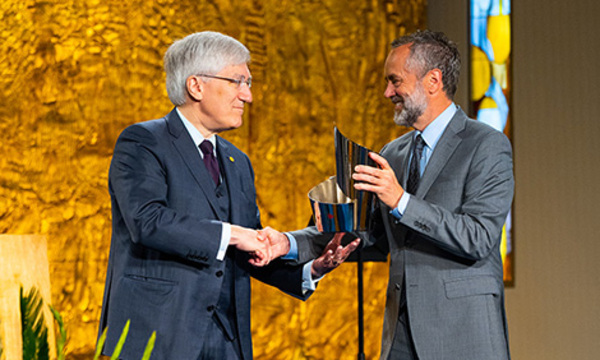I am often asked, “What is the secret to becoming a great leader?”
Kevin Cashman in his book, Leadership from the Inside Out, encourages us to find our authentic self and then base our actions as leaders on an honest expression of who we are. Although not limited solely to the study of leadership, the idea of connecting to the authentic self is one of the more widely accepted principles of modern leadership theory and a hallmark of the master of arts degree in organizational leadership taught at Biola. The importance of acting authentically is also found in Scripture (e.g., Matthew 7:15, Luke 6:45). By getting a better sense of who we really are, we are on a firmer foundation to change into the person the Lord wants us to be.
On the surface, discovering our authentic self seems like a reasonable notion. Yet, as we all know, it is easier said than done. It is an on-going process of peeling back and then examining layers of crust that we have built over a lifetime to protect ourselves from the stark realization that we are often less than we hope to be. Yet, only through such a process can we more realistically identify what needs to be changed.
My realization of the importance of this issue came into sharper focus through my work as an executive coach and in teaching the “Leadership and Personal Change” class at Biola. In both situations, I discovered that the personal growth process was accelerated when clients and students clearly understood the difference between who they were and who they wanted to be.
In class, I use a couple of simple exercises to help students gain a more realistic perspective of their personal sense of self. The exercises are designed to help bring the student’s current action into better synch with how he or she wants to act. I encourage you to complete the two exercises below as well.
- Exercise 1: Write a statement that reflects what you consider to be your purpose on this earth. Next, pretend that you are another person who has intimate knowledge about you, your actions and your innermost thoughts. Write a statement of your purpose in life from this person’s eyes based on how they have observed you. Share the two with someone who knows you well and ask for his or her feedback. Now compare the information you have gained and openly consider the differences.
- Exercise 2: Identify six or so areas that represent the core values in your life. (Often students will take the six pillars of character to include trustworthiness, respect of others, responsibility, fairness, caring and citizenship, and then add another representing their faith.) For each core value, write a paragraph or two that presents a realistic appraisal of how you act relative to these values. For example, while you might aspire to be caring in all situations, you are probably not. Then, write a one- or two-sentence summary statement for each value that accurately expresses this quality based on how you act. This statement becomes, in effect, your personal expression of each value. Share each summary statement with someone who knows you well, and ask the person if each statement reflects how he or she sees you acting out each value. Armed with this information, openly reflect on each statement and consider whether or not you would like to change.
It can be scary to take on such a daunting task because down deep inside we know that we are far from perfect. Yet, when my clients and students are able to examine themselves in an honest manner, they usually find that they are not nearly as bad as their worst fears. As they begin to understand who they are, they begin to accept. As they accept, they begin to grow and change in meaningful ways.
 Biola University
Biola University.jpg)

